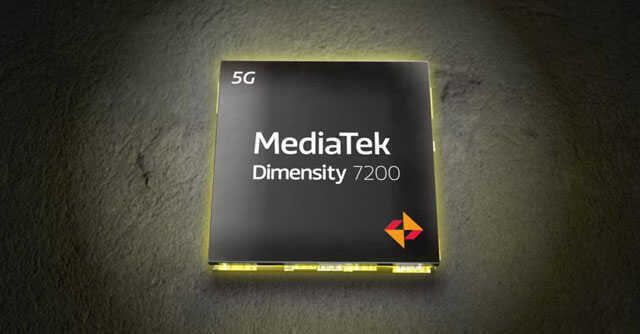
MediaTek Dimensity 7200 SoC sub-flagship smartphone SoC launches amid demand lull


Taiwan-based chipmaker MediaTek on Thursday unveiled its latest system-on-a-chip (SoC) processor, the Dimensity 7200, which is targeted at non-flagship smartphones. The launch of the chipset comes at a time of lull for the global smartphone industry in terms of consumer demand, which has been driven by the lack of availability of affordable 5G smartphones that would compel users to upgrade their existing devices. While MediaTek has not offered an indicative list of brands or devices that it is working with, the company has confirmed that devices powered by this SoC will be launched starting this quarter itself.
The SoC itself appears to be a mid-premium range one, since its naming nomenclature falls in the range of chips below its flagship Dimensity 9200 SoC. This would make it equivalent to Qualcomm’s Snapdragon 7 series of SoCs, and could thus be found in smartphones priced at around the ₹30,000 mark. It also comes days after a supply chain report in China claimed that Qualcomm is close to launching its own sub-flagship grade mobile phone chip for 2023, the Snapdragon 7 Plus Gen 1 SoC.
In terms of the capabilities itself, the Dimensity 7200 SoC uses the flagship grade 4nm lithography process by Taiwan Semiconductor (TSMC), and alongside incremental performance upgrades, supports full HD displays with up to 144Hz refresh rates, and AI-based shadow rendering in games depending on scenes — a feature that is officially called ‘Variable Rate Shading’, and is enabled through MediaTek’s HyperEngine.

It also supports up to 200MP smartphone cameras, 4K HDR video recording, UFS 3.1 fast storage standard, and AI camera enhancements such as real-time portrait beautification. On the connectivity front, it supports 5G, Wi-Fi 6E and Bluetooth 6.3.
The launch of the new mid-range chip comes at a time when the global smartphone industry is expected to see marginal decline in shipments through the year, as inflationary concerns combined with rising device life cycles have led users to buy fewer smartphones. Chipmakers, however, have not refrained from cyclical launches — Qualcomm, on Wednesday, launched its new 5G modem, the Snapdragon X75. The latter, according to the company, is the world’s first commercial modem that supports 5G-Advanced, the next-generation telecom network that is expected to be first seen globally in 2025.
